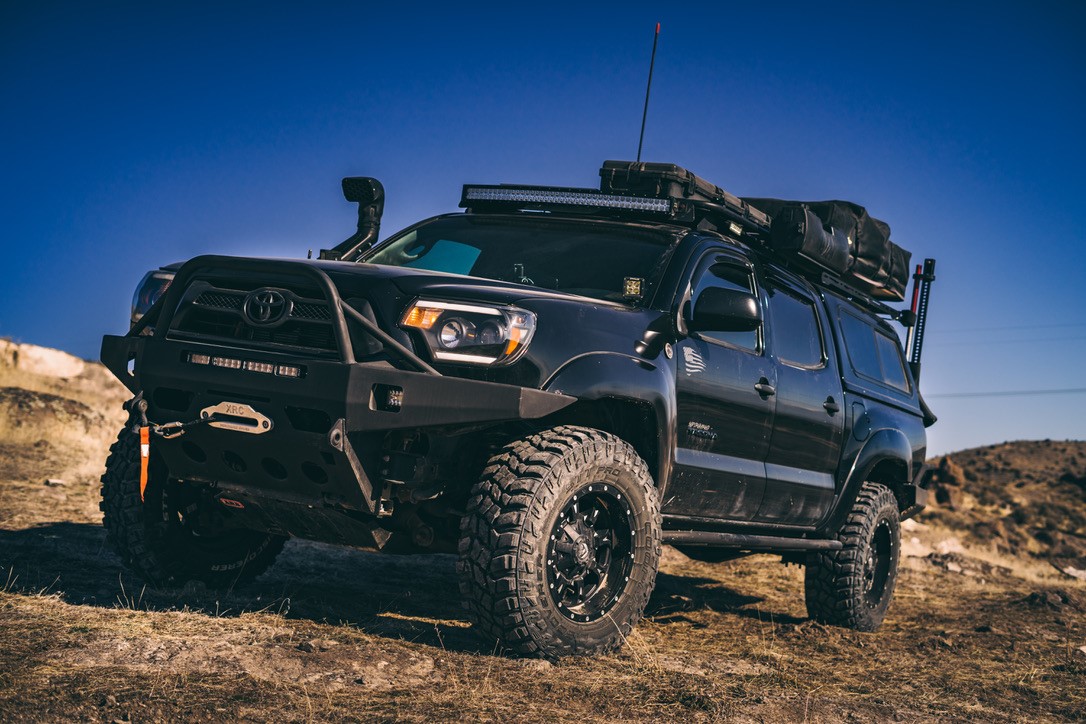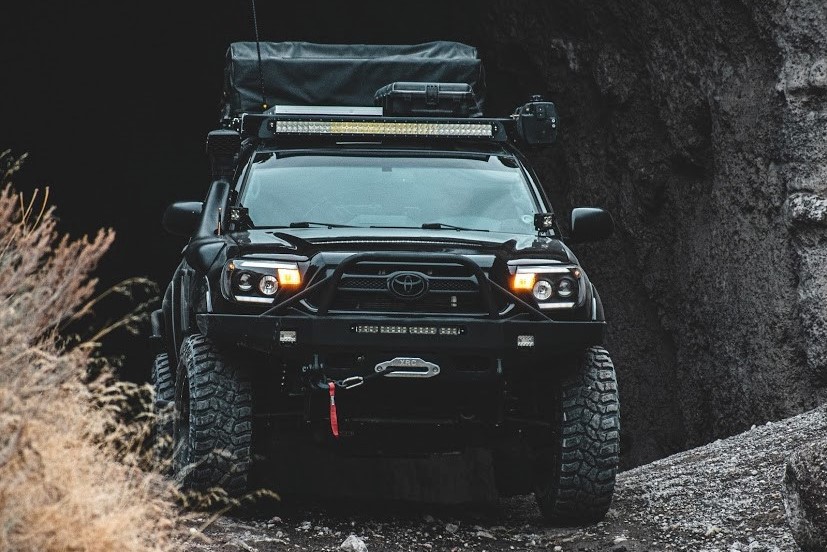
Who Needs a Dual Battery System?
So you have your tires, lift kit, armor, brakes, rooftop tent, seat covers, and drawer system…now what?
I built my truck from the ground up. I wanted to ensure that the foundation was solid and ready before I tricked out all of the other aspects that I wanted to install to make camping and exploring more comfortable.
As we venture further into the vastness, we find ourselves possessing more and more devices that require power. Cellphones and iPads for navigation, cameras, drones, refrigerator and for some, there are devices that are medically required like CPAP/BiPAP machines (yes, I’m old).
We clearly do not want to run our vehicle all night, or worse, burden our single source of power in the middle of nowhere only to find ourselves stranded with a dead battery.
The solution is putting that extra electrical load on a backup or dual battery system. As intimidating as that may sound, it is really quite simple. Hopefully, by the end of this article, you will be well on your way to the garage to set yours up.
This install was done on a 2nd Gen Tacoma, however, generation does not matter. You can wire this same setup on your 3rd Gen Tacoma, or any other make and model you please.
Table Of Contents
Getting Supplies

The very first question that comes to mind when modding your trucks is: “How much is this going to cost me?”
Have no fear, this mod won’t break the bank and will serve you for years to come, providing endless power when you need it the most. Keep in mind, there is cheap and then there is cheap and reliable. Do your research, read reviews and find out which products are worth the effort.
The first obstacle is finding out how you are going to use your power. Are you looking to camp for a day or two on the weekend, or are you taking an expedition to South America or Siberia? There are options for either application, but you do not want to buy something unreliable, and chance being stranded.
Your immediate impulse might be to jump on the internet, where you will find thousands of opinions on what battery works best for a dual battery setup. That is a topic for another time, however, I personally have a marine deep cycle battery for mine.
Which Type of Battery?
If you do your research, you will see there are several options, such as:
- Wet Cell/flooded
- Lithium-Ion
- Silver Calcium
- Valve-Regulated Lead-Acid
- Absorption Glass Mat (AGM)
- Gel Cell Batteries
Look around and make sure you get what fits your application and needs the best and will also give you years of reliable usage.
You want to ensure that you are not getting a battery that is bigger than the one you use to start your vehicle. This is due to your alternator sensing that one of the batteries is full. This will cause it to stop charging your auxiliary battery, thus not utilizing your back-up battery’s full potential.
Solenoid Or Isolator
Next on your shopping list is a solenoid or isolator. They all have different features and their pricing can vary.
I have the Blue Sea ML-ACR, solely based on its ability to switch over to the auxiliary battery to start my vehicle if my primary battery dies. That is pivotal if you are in the middle of nowhere and experience failure. It gives me peace of mind that I can get the truck started no matter what the situation is.
Find The Parts Online:
- Budget Option – PAC 200 Amp Relay Battery Isolator: Check Price
- Mid-Grade Option – Blue Sea Systems Automatic Charging Relay (ACR): Check Price
- High-End Option – REDARC 12V Charger: Check Price
- 4 Gauge AWB Pure Copper Flexible Cable Wire: Check Price
- ZOOKOTO 80 Amp Circuit Breaker: Check Price
- Uriveusa 12V Add-A-Circuit Fuse Tap: Check Price
- 4 Gauge AWB Pure Copper Cable Lug/Terminal Ring Connectors: Check Price
- American Terminal Wire Loom: Check Price
- Dual Waterproof USB Charger Socket/Outlet: Check Price
- ECO-Worthy 100 Watt 12V Solar Panel Off-Grid Kit: Check Price
Now that you have everything ready, let’s get your system wired up and the auxiliary power flowing. The diagram below will work for any vehicle and have you up and running in less time than it takes to finish a six-pack.
Let’s get started!
Wiring & Routing Battery

#1 – Find A Spot
First, you want to figure out where you want to place your second power source.
There are countless options here, from inside the engine bay to the back of the bed. I have a homemade-built drawer in my truck with a compartment for my compressor and battery. It houses all of my accessory needs; its a one-stop-shop for off the grid living.
#2 – Prep Wiring
Once you know where you would like to install your battery, you will need to start prepping your wire for connections.
Your 4-gauge red wire needs to have an inline fuse as close to the battery positive as you are able to place it without it sitting right on top of it. This protects from surges of power getting to your solenoid and turning your truck into a roadside BBQ.
The same will be done for your primary battery. Most solenoids will require you to tap into your fuse box and find a fuse that is only hot when the truck is running. Follow the instructions on the one you purchase and you should have no problems. That portion is easy; simply use 12-gauge wire and the fuse taps mentioned earlier in the parts list.
If you are running your wire to the rear of the vehicle, ensure that you are keeping the wire safe from sharp edges and hot spots like the muffler, manifold or engine block as well as any moving objects like the driveshaft. Wrapping your wire in a protective, corrugated wire loom will also help safeguard against damage. Also, ensure that you are securing your wire with zip-ties or safety wire frequently along the way. There should be no play in your set up.
Voltmeter Display

An added perk for installing a backup battery is the ability to place a gauge on your battery to let you know that things are working, fully charged and ready for action.
Something like a waterproof USB charging socket and power outlet with voltage display can give you versatility and knowledge of what is going on. This part can be placed almost anywhere.
Solar Charging

With your new backup battery system now installed, you are able to run your fridge and charge all of your accessories on the trail. However, your battery will eventually run out unless you have your alternator recharging it. One way to circumvent that problem is to install a solar panel on your truck that charges your system between dusk and dawn.
All you will need is a solar panel and controller and you are good to go. Your new addition will look something like the diagram below.
Solar Wiring

Use no less than an 8-gauge wire to connect your controller to your battery. Most solar panels and controllers come with everything you will need to get going.
Mounting options for your solar panels are almost limitless. They come in rigid and flexible options allowing you to place them wherever you would like. As always, just ensure that you are protecting your wire from damage as discussed previously.
Final Thoughts

You have done all of your research, purchased all the necessary parts and now you are set for auxiliary power!
No longer will you have to worry about running your main battery down to zero.
Some people go as far as hooking all of their lights and on-board air compressor to their secondary battery to keep the primary one charged and ready to get them home when the time comes.
I hope this helps you make the leap into the realm of accessory power; it’s really not as intimidating as you might have thought, right?!
The longest part of this modification will be waiting on Amazon to deliver your goods!
Stay safe and see you on the trail!


do you use existing solenoid? or do you need to purchase the 80 amp solenoid?
Vernon,
Great article! Do you have additional pic of where you installed the secondary battery? I’m trying to decide where the best location would be on my 2007 dbl cab tacoma.
Try behind ur rear tire well that’s where I welded a bracket for a secondary battery